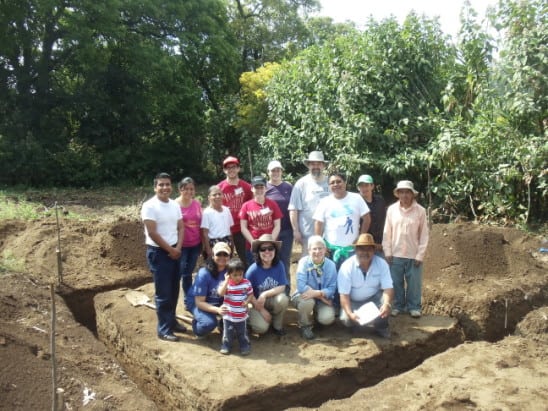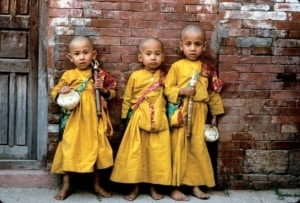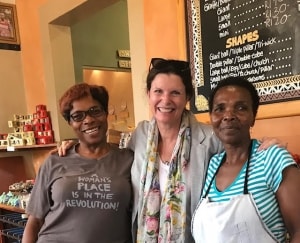
Elizabeth Andrews is an anthropologist by education and profession. She worked as an anthropologist for many years for the State of Alaska. In 2002 Elizabeth was inspired to volunteer internationally with Habitat for Humanity. She is now a Team Leader and will be leading teams to Kyrgyzstan and Guatemala later this year. Elizabeth discusses her volunteer experiences in this interview. She also describes what a Habitat for Humanity volunteer might be doing on a mission and shares some thoughts on how a prospective participant might prepare for a successful volunteer experience.
John: How many international projects have you worked on in how many countries?
Elizabeth: I’ve worked on 11 international projects in 8 countries, including the US. These were all projects related to improving housing conditions in other countries and in the US with volunteers from other countries and the US. These projects have all been with Habitat for Humanity International, as part of their Global Village Program or Carter Work Project.
J: What inspired you to go on your first volunteering project?
E: In 2002, I heard about a Carter Project hosted by Habitat for Humanity International that was going to take place in Durban, South Africa. This project was especially interesting to me, as it would be in post-apartheid South Africa, where we would be building the first 100 of 300 houses on land from which nonwhite people had been removed from cities and relocated to townships during the years of apartheid policies. As part of the reconciliation in post-apartheid South Africa, the city of Durban donated the land. Habitat for Humanity partnered with low-income families who obtained a loan from Habitat to purchase the home over time and to participate with volunteers in the construction of the house. As this project was taking place the year after the horrendous act of terrorism and destruction on 9-11 here in the US, I was inspired to volunteer toward something constructive in a place that was rehabilitating and reconstructing. At that time, South Africa was one such place.
J: Are there any particular skills a volunteer to Habitat for Humanity should possess and do you include generalists in your volunteers?
E: Volunteers with and without construction skills are welcome. There are many tasks associated with a Carter Project, from registering volunteers and delivering water on the worksite; serving meals and assisting at the First Aid stations; to construction. Global Village projects involve many types of construction not typical of what you find in the US, so you will learn the techniques and use of tools typically used in the host country. This may include learning to bend and cut rebar and tie it for setting into foundations and wall supports; weaving bamboo strips or tying cane reed that will be used in wall construction; setting concrete blocks; forming blocks of adobe clay and straw; or helping make bricks of locally derived earthen material that will be sun-dried and then used for house construction. Similarly, a volunteer team may be making smokeless stoves out of adobe clay and straw to form a specially designed stove that eliminates smoke in a home or kitchen interior and greatly reduces the amount of wood needed to generate heat. Or, volunteers may be working on building latrines or water filtration, and other clean water projects. Each of these greatly improves the housing conditions and health for families.

J: Can you describe a typical Habitat for Humanity project?
E: Volunteers and teams arrive in a host country where they are met and accompanied by local Habitat for Humanity staff and volunteers who will be with the team for the duration of their trip. They assist with the work, coordinate activities, translate, and share much about local culture and life. Teams stay in simple lodging, which may be in a small, comfortable hotel or guest house; have all their meals together; and work together during the day on the job site alongside the family and other community members. The work to be done varies from country to country and trip to trip; no two trips are the same, even in the same country! Some after-work cultural activities are arranged during the week or two, and on the last day of the trip.
J: Any thoughts on how a volunteer should prepare for a Habitat for Humanity assignment?
E: It’s important to be willing to learn from others, whether fellow team members or the families and host country people we are with. These are cross-cultural experiences! People want to learn about us and our country, too, and I have found people are always willing to share about their own way of life and teach me about their country and how they may make something, whether weaving fabric, building a house and mixing concrete on the ground, or making tortillas!
Flexibility and a good sense of humor are key! You never know what the day will bring to you and the team!

J: How do you develop local buy-in for your projects?
E: Habitat for Humanity International has affiliates in over 70 countries around the world. Their national and affiliate offices employ local residents and work carefully with communities to develop projects that meet their needs to improve housing conditions. Volunteer teams are sent to countries where there are projects that are suitable and have the capacity for hosting international volunteer work teams, in addition to the many other projects that the local affiliate is engaged in.
J: Can you relate a particular example of where you know you made a positive impact on someone’s life through your volunteer work?
E: One example was working with a Roma family in Romania who would be able to settle into a community where their children would be able to remain in school and the family head was able to have regular work in construction. Having someone sincerely invite you to come back and visit them in their new home to me shows the pride they have in their new house and desire to share with others what they have achieved through their work, saving to be able to obtain the loan, and friendship with others.
J: Do you have some thoughts about important points a prospective volunteer should consider when choosing their first volunteer assignment?
E: Always remember that the assignment isn’t about you, your trip, or your experience.
J: What Habitat for Humanity projects do you have in your immediate future?
E: A family in rural Kyrgyzstan has been selected to work with our team of volunteers to complete construction of an earthquake-resistant house with an extended family in a community where Habitat has had several projects during the past 8 years. Also, I will be leading a team of volunteers to Guatemala to learn about the vulnerabilities of low-income, small-scale coffee growers and constructing smokeless stoves and latrines to help improve the housing and health conditions of families with incomes too low to be able to afford materials to build a new home.
J: Thank you, Elizabeth for sharing your volunteer experiences and tips about preparing for a volunteer assignment. You have provided very insightful and practical information for a prospective volunteer.




